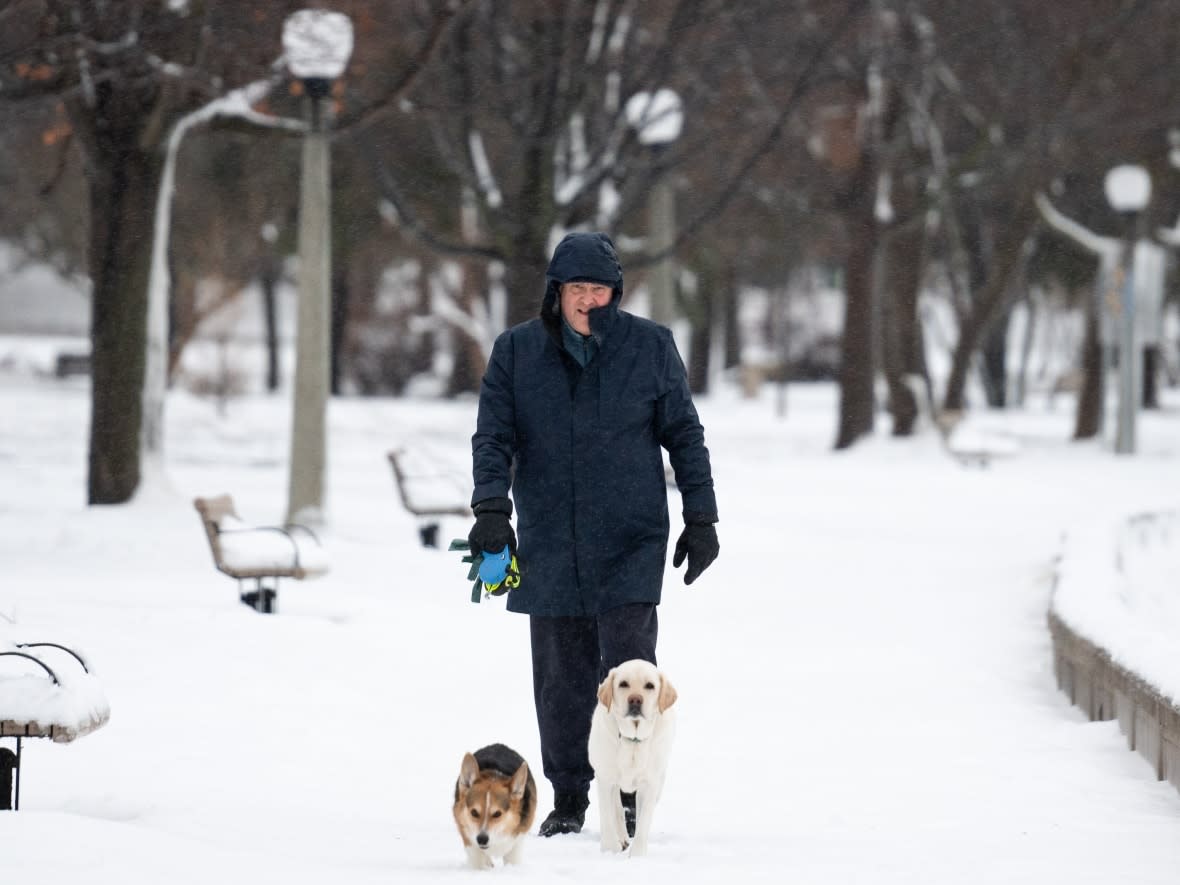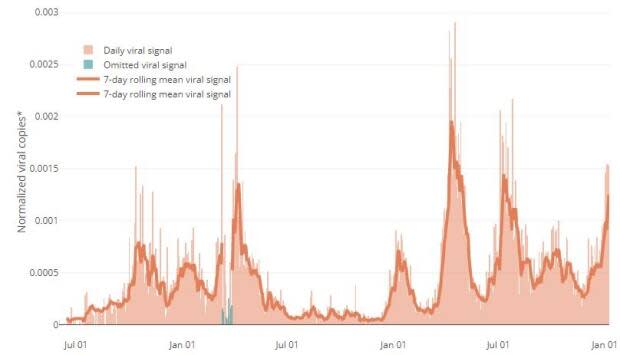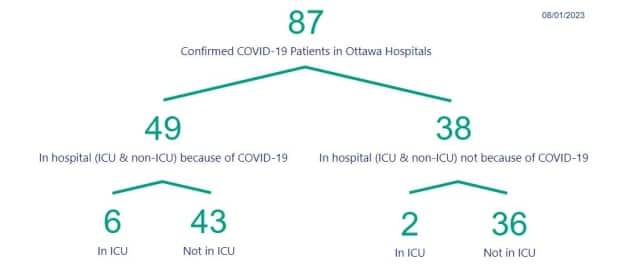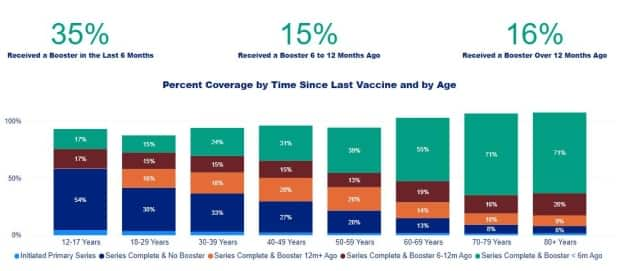Ottawa's COVID picture mostly stable, except for wastewater

Recent developments:
Ottawa's COVID-19 trends are mostly stable.
A quickly rising coronavirus wastewater average is the exception.
About 4,100 more Ottawans got a COVID vaccine.
Twelve more COVID deaths have been reported in the region.
The latest guidance
The health-care system, particularly for children, has been under a lot of pressure because of COVID-19, flu and respiratory syncytial virus (RSV), resulting in long wait times and unprecedented moves to try to cope.
Experts strongly recommend people wear masks indoors and, in Ontario, in the days after having COVID symptoms.
Staying home when sick, keeping hands and surfaces clean and keeping up-to-date with COVID and flu vaccines are also recommended to help keep people safe, especially more vulnerable people including children.
CBC Ottawa takes a look at COVID trends on Tuesdays and Fridays. A broader look at respiratory illnesses comes on Wednesdays: Ottawa Public Health (OPH) says flu activity is considered stable while other respiratory illness activity, including COVID, is rising.
Wastewater
Data from the research team says the weekly average level of coronavirus in Ottawa's wastewater, as of Jan. 8, had been rising since the last week of November, and the pace of that rise has sped up since the last week of December.
The COVID levels have doubled since Dec. 26. It's only been higher three previous times, though there isn't data from the first wave.
Ottawa Public Health (OPH) considers this level to be very high.

Hospitals
OPH's count of active, local COVID-19 hospital patients sits at 35, according to Tuesday's update, with one patient in intensive care. That's stable after a rise in Friday's update.
There is another count that includes other patients, such as people admitted for other reasons who then test positive for COVID, those admitted for lingering COVID complications, and those transferred from other health units.
That number has been stable.

Tests, outbreaks and deaths
Ottawa's COVID-19 test positivity rate remains around 19 per cent. OPH considers this high. Testing strategies changed at the end of 2021 and many cases aren't reflected in counts.
There are 30 active COVID outbreaks in Ottawa. This count has been stable this month and it is considered moderate.
OPH reported 190 more COVID cases over four days and the deaths of four people who had COVID: two of them age 90 or above, one in their 70s, and one in their 80s.
In all, 994 Ottawa residents who had COVID have died since the start of the pandemic.
Vaccines
Thirty-five per cent of Ottawans age 12 and older have had their most recent dose within the last six months, as is generally recommended, with older age groups having higher rates.
More people have also received their last vaccine over a year ago compared to residents who last had a shot six to 12 months ago.
This does not factor in immunity from getting COVID.

About 4,100 Ottawa residents had a COVID vaccine in the last six days, OPH said. That's more than the previous week but less than the weekly pace in autumn. Nearly all were third and fourth doses.
As of the most recent weekly update, 93 per cent of Ottawa residents aged five and up had at least one COVID vaccine dose, 90 per cent had at least two and 62 per cent at least three.
Thirty-six per cent of Ottawans aged 12 and older had at least four doses.
About 9,550 residents younger than five have had a first dose, which is about 21 per cent of Ottawa's population of that age group. About 5,050, or 11 per cent, have had two.
Across the region
Spread
Coronavirus wastewater data averages are high and rising in Brockville, and high and more stable elsewhere in Leeds, Grenville and Lanark (LGL) counties. Data for other areas outside Ottawa is out of date or unavailable.
The average COVID-19 test positivity in the Belleville area is a high, stable 20 per cent. It's also high and stable around 18 per cent in the Eastern Ontario Health Unit (EOHU).
Kingston, Frontenac and Lennox & Addington (KFL&A) Public Health's test positivity dropped from a record-high 25 per cent over the holidays, when the testing dynamic was different, to 18 per cent.
Hospitalizations and deaths
Eastern Ontario communities outside Ottawa report about 45 COVID-19 hospitalizations, with seven patients in intensive care. Both are higher than they were last week.
That regional count doesn't include Hastings Prince Edward (HPE) Public Health, which has a different counting method. It has at least 10 local COVID hospitalizations for the first time in about two months.
Western Quebec's health authority, CISSSO, reports a stable 86 COVID hospitalizations. None of the patients are in intensive care.
The EOHU's COVID death toll rises to 282 people, with three more deaths reported since Friday. HPE, with two more reported COVID deaths, now has a total of 101.
KFL&A's two more COVID deaths mean it has reported 105 so far. LGL reported one more death for a total of 145 people.
Vaccines
The Kingston area's health unit says that 33 per cent of its population age five and up have had a booster vaccine in the last six months. That number is 27 per cent in HPE and unavailable elsewhere.
Across eastern Ontario, between 82 and 93 per cent of residents age five and up have received at least two COVID-19 vaccine doses, and between 53 and 65 per cent of those residents have had at least three.


